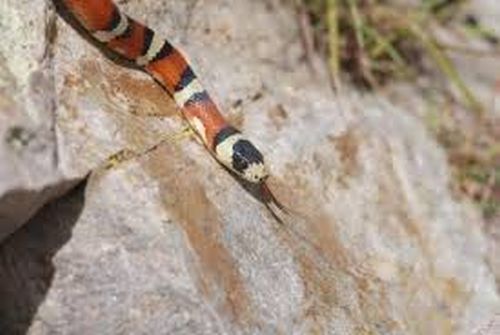We are often fascinated by the bright colors of the animals. In nature, these bright colors of the animals are not just to impress females or a fashion statement, rather are the characteristics of animals with an anti-predatory defense, such as a poison or sting. Predators over the time have understood to avoid attacking such animals, which either can hurt them or might taste awful.
Other defenseless animals prefer to camouflage to go unnoticed by their predators or mimic bright color nasty animals that are generally avoided by the predators. Such mimicry is common in the nature and often confuses the predators between a tasty meal or dreadful experience. Researchers at Michigan State University (MSU), are trying to interpret the reason behind the evolution of bright colors in prey with venom or sting, even nonvenomous prey and how does the predators understood to steer clear of such preys.
Certain nonvenomous animals which used to camouflage to protect themselves, have abandoned the skill and have learned to display bright colors, said an MSU doctoral student of zoology, Kenna Lehmann who is also associated with the research. The question that arises here is, why do these take the risk when they don’t distinctively duplicate the colorful venomous prey? This can also increase the risk for the imitators of being identified while trying to cross a middle ground.
Researchers answer to this question is that the risk borne by the nonvenomous prey is worth to take, for their survival as the evolutionary benefit of the mimicry does the work. By mimicking an animal with venom or sting, the defenseless animals have the advantage of being avoided by a predator that has learned to maintain a distance with bright colored animals that are mostly venomous. This imitation gives the defenseless animal protection from the predators and chance of survival.
One such example can be seen in coral snakes and king snake. The non-poisonous king snake almost mimics the poisonous coral snake with a just a marginal variation in the color of the bands. Though not completely identical, king snake still manages to confuse its predator and who avert them considering them to be poisonous.
However, why animals instead of developing skills to imitate, did not evolve to produce venom as a more efficient way of protection? According to Lehmann, leaving the protection of camouflage and gradually evolving to imitate bright colors might be a risky journey. While crossing the middle area where the chances of being identified as an imitator is quite dangerous. This could be probably because producing venom requires more energy and taking up the bright color to resemble a venomous prey gives them the required protection. Therefore, it was easier and less costly to mimic than to evolve into venom producing individuals.
The research is also one of its kind as researchers conducted the study in a virtual environment called Avida and used digital organisms rather than watching predators while hunting or avoiding these preys. Avida is a software where these digital organisms mate, evolve and even undergo mutations just as it would happen in a real world. Quite a breakthrough!
Source: e! Science News




